This is how we do it: Giana Martinez's 'Chicana Diaries'
With "sharp edges, cutesy excess, and unflinching sincerity," a Wichita tattoo artist brings a slice of East L.A. to Harvester Arts. The exhibition is on view through July 25.
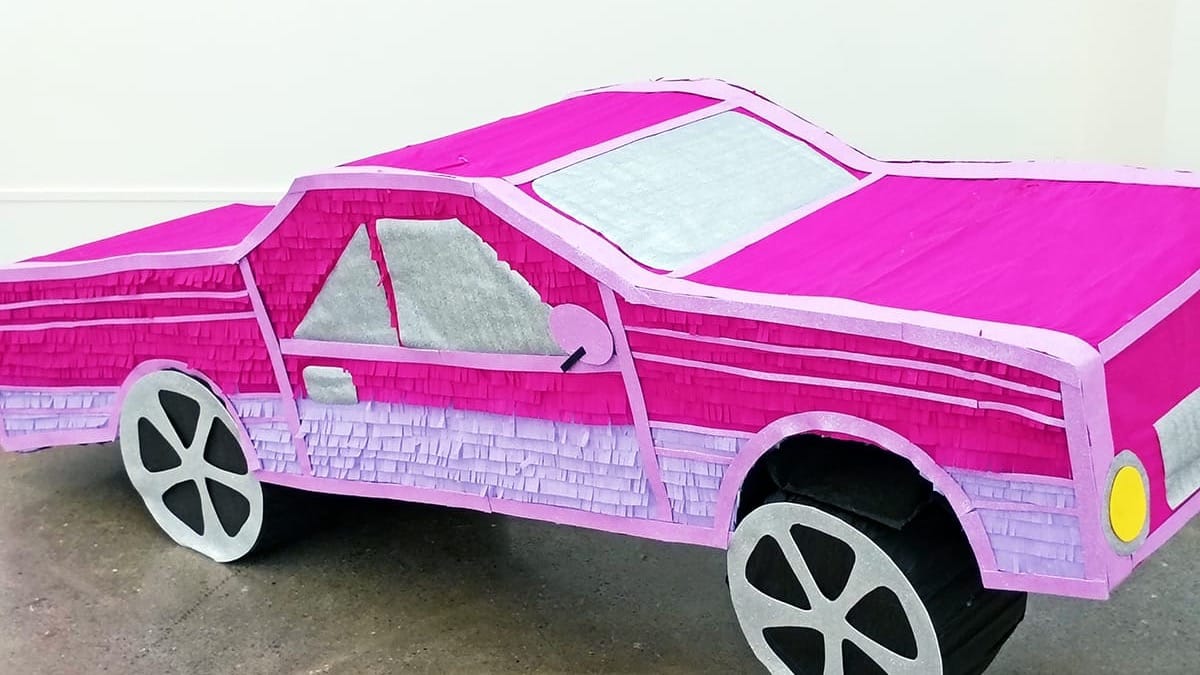
The immersive multimedia exhibition "Chicana Diaries" is as "personal as it gets" according to its creator Giana Martinez. Martinez, whose works largely comprise the show, is the owner of Por Vida Ink and a specialist in "black and white Chicano tattoos."
The visual idiom of her tattoo work — teardrops, Betty Boop, La Virgen de Guadalupe, lowriders, spiderwebs, roses — also forms the show's own vocabulary. For a brief time, Harvester Arts has been transformed into something akin to East Los Angeles, with the obvious distinction of being housed inside an exhibition space. This juxtaposition augments the whimsy inherent in many of the works, forcing their sharp edges, cutesy excess, and unflinching sincerity into high relief.
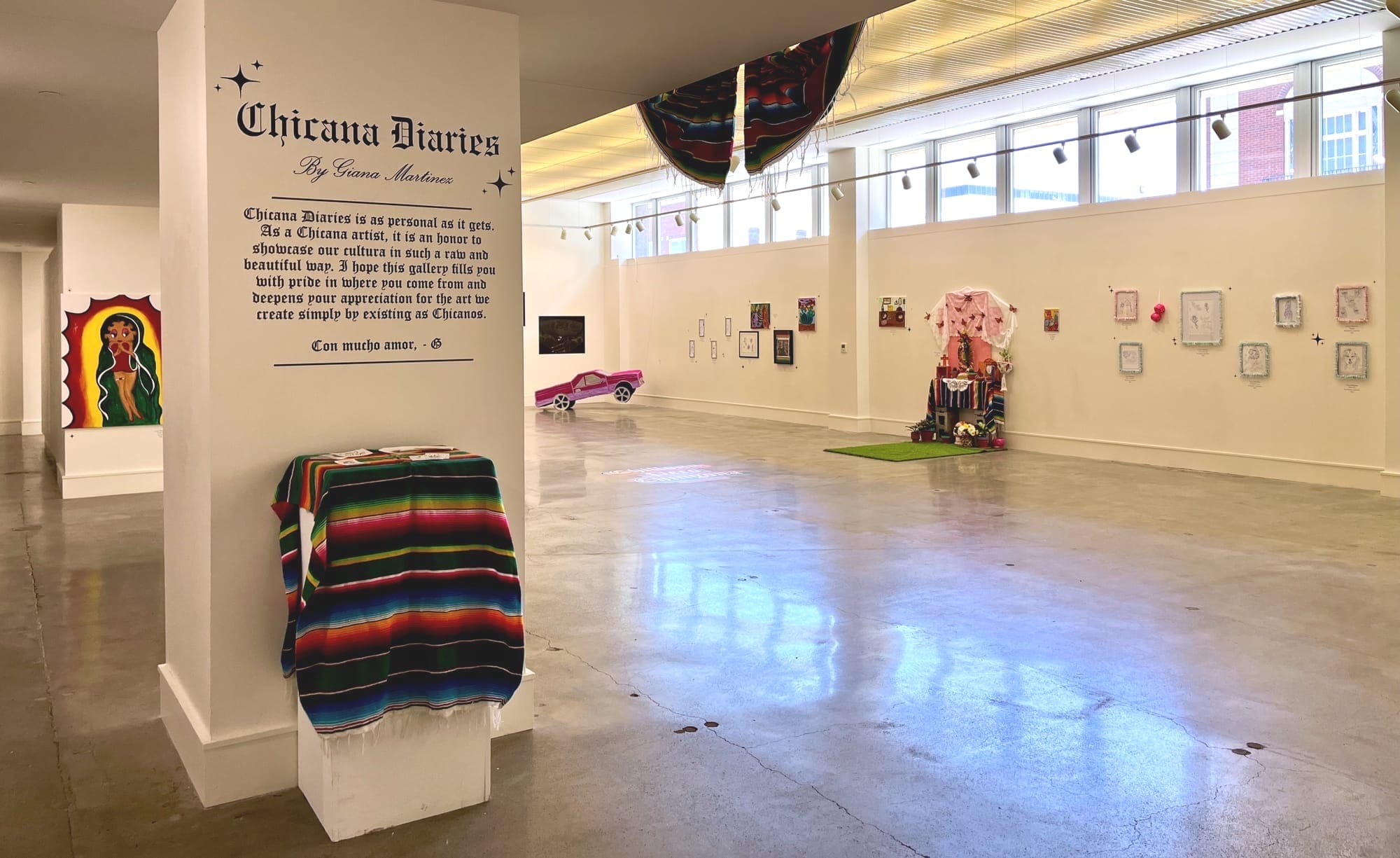
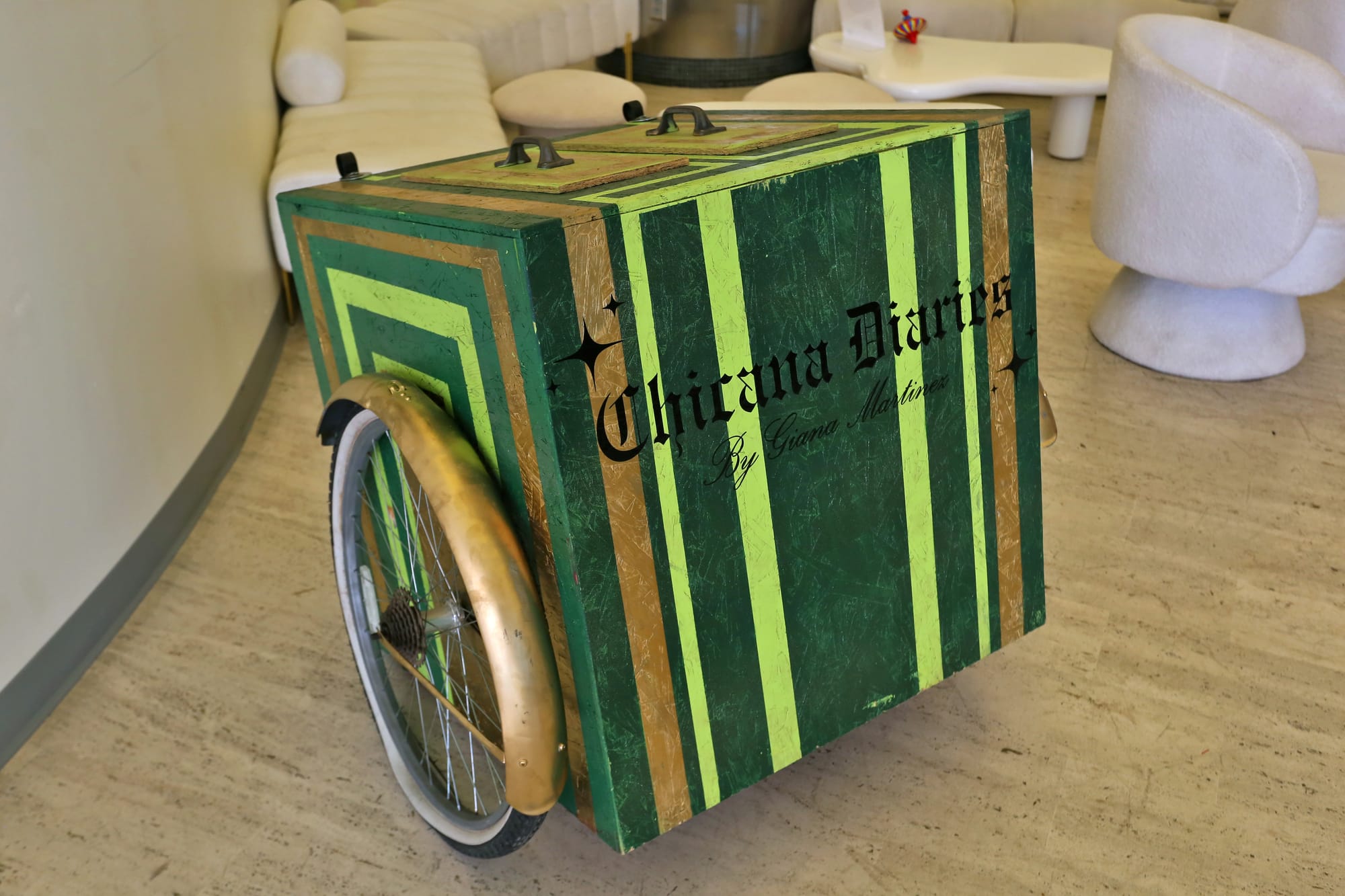
Refreshingly, the show offers virtually no exposition. There is no catalog, the signage is minimal, and Martinez's brief written salutation is not addressed to harried journalists, wine-and-cheese junkies, self-proclaimed connoisseurs, or bored passersby, but to her people. She writes:
Chicano Diaries is as personal as it gets. As a Chicana artist, it is an honor to showcase our cultura in such a raw and beautiful way. I hope this gallery fills you with pride in where you come from and deepens your appreciation for the art we create simply by existing as Chicanos.
Con mucho amor, — G
The media in the exhibition ranges from Martinez's pen drawings on paper to cloth items from daily life, her acrylic paintings, etched glass, piñatas, and gorgeous photographs by Andres Vitela — another local entrepreneur who co-owns Vitela's Chop Shop. Vitela's photographs largely portray women undertaking tasks captured in high-contrast photos reminiscent of instant photography. In one duo, a woman shops at either a carnicería or panadería, perusing the Mi Costeñita display and pulling a Mexican Coke out of the fridge.
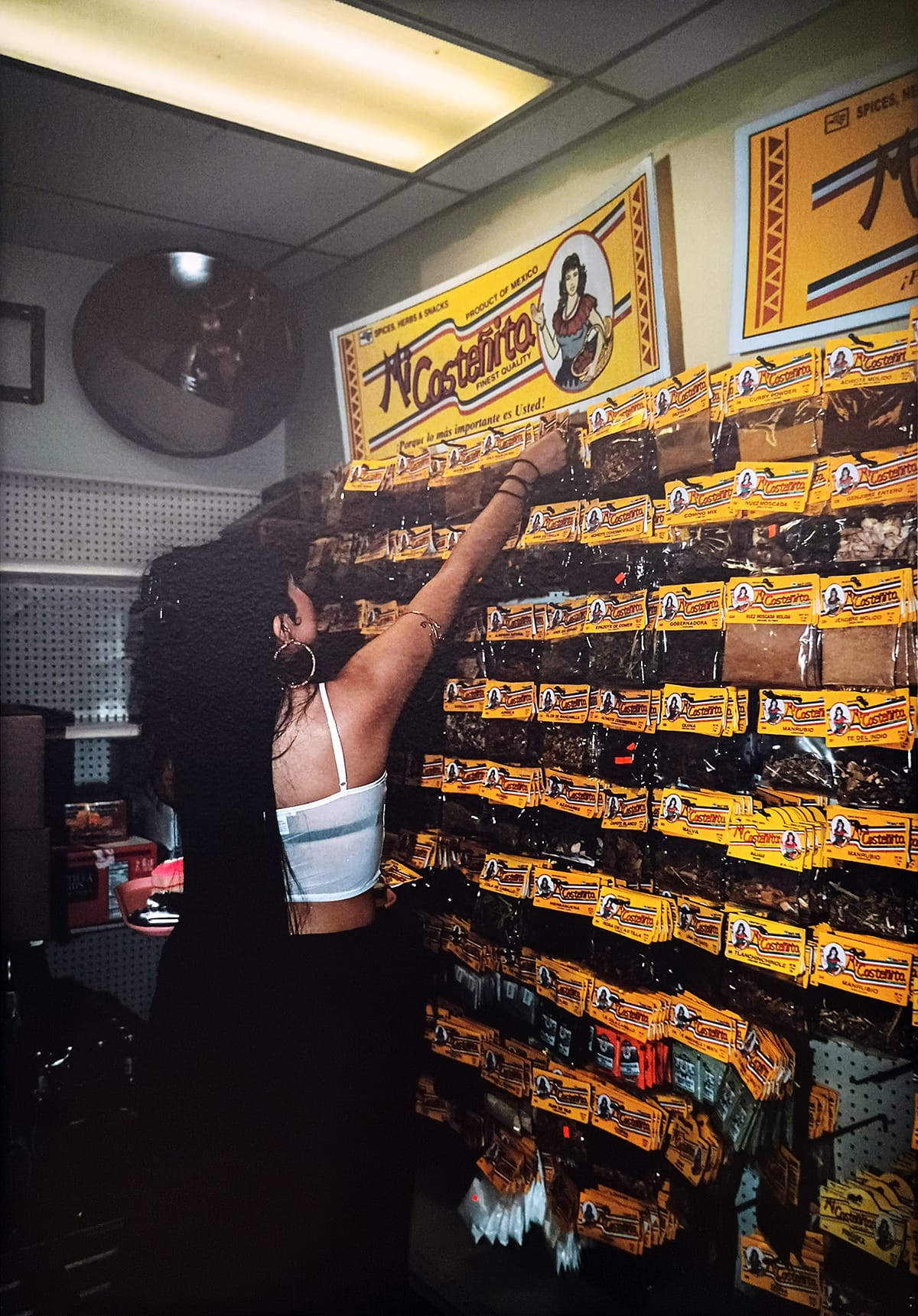
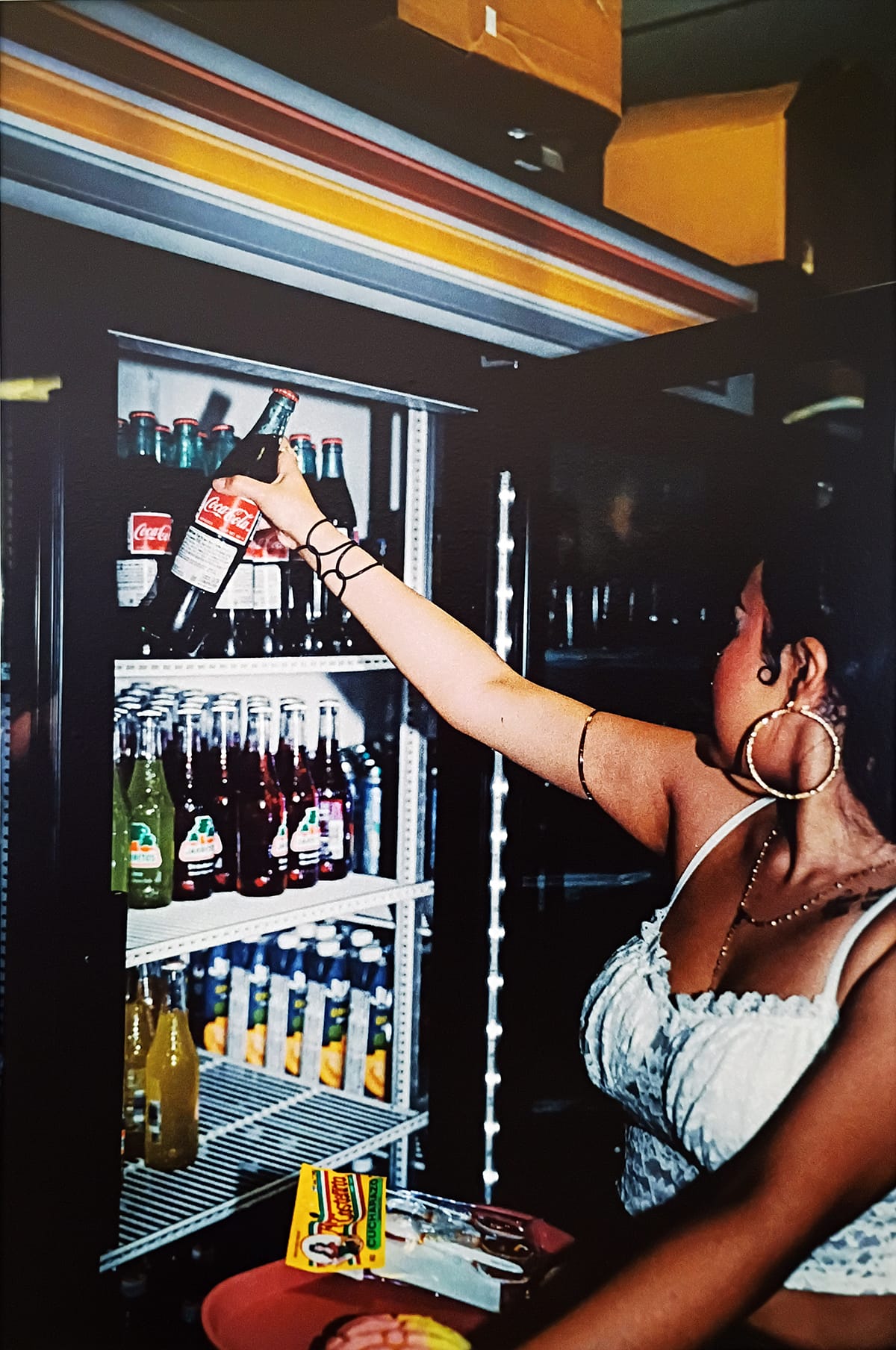
Untitled photographs by Andres Vitela. Photos by Jeromiah Taylor for the SHOUT.
Martinez's etched-glass pieces dot the exhibition. Two etched vases, collectively titled "Altar Vases," sit atop a small console, one etched with the face of the Virgin and the other with the outline of the Sacred Heart, both images ensanguinated by crimson rose petals suspended in water. One mirror is bedecked with white lace and etched with the words "smile now, cry later." Above those words is a twist on the classic tragedy-comedy masks: Martinez makes them two parts of one face, split in half, and in the shape of butterfly wings.
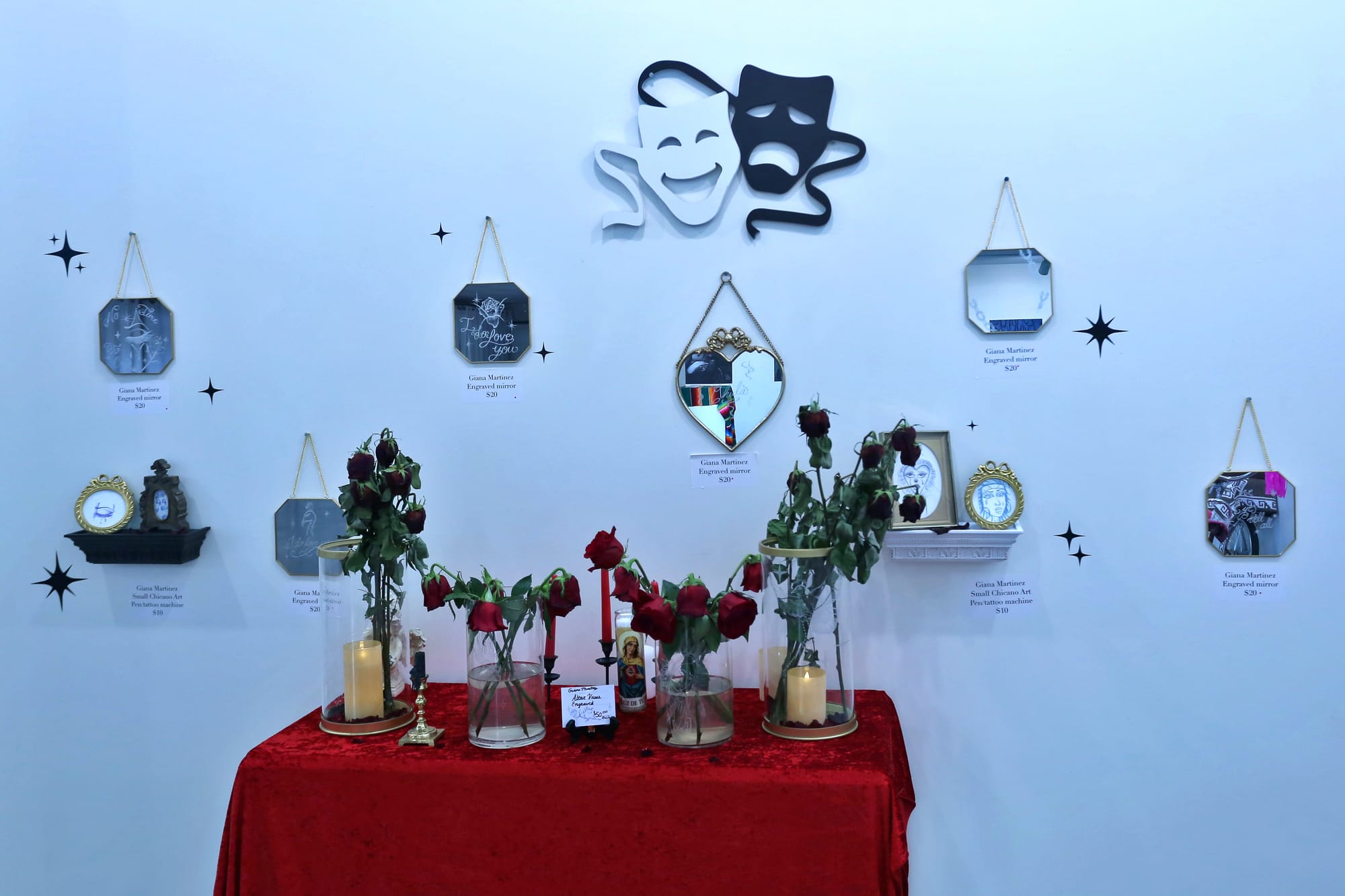
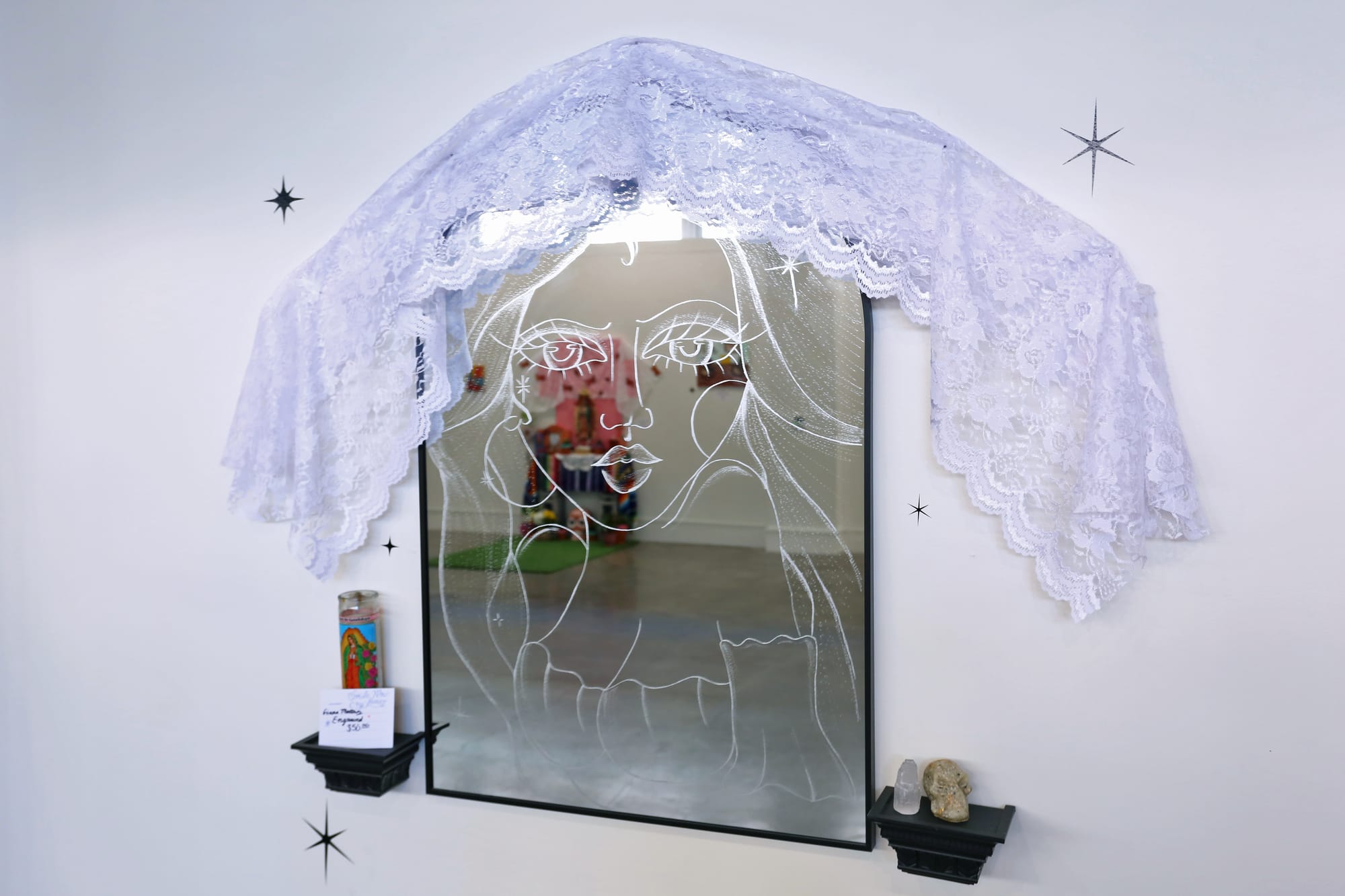

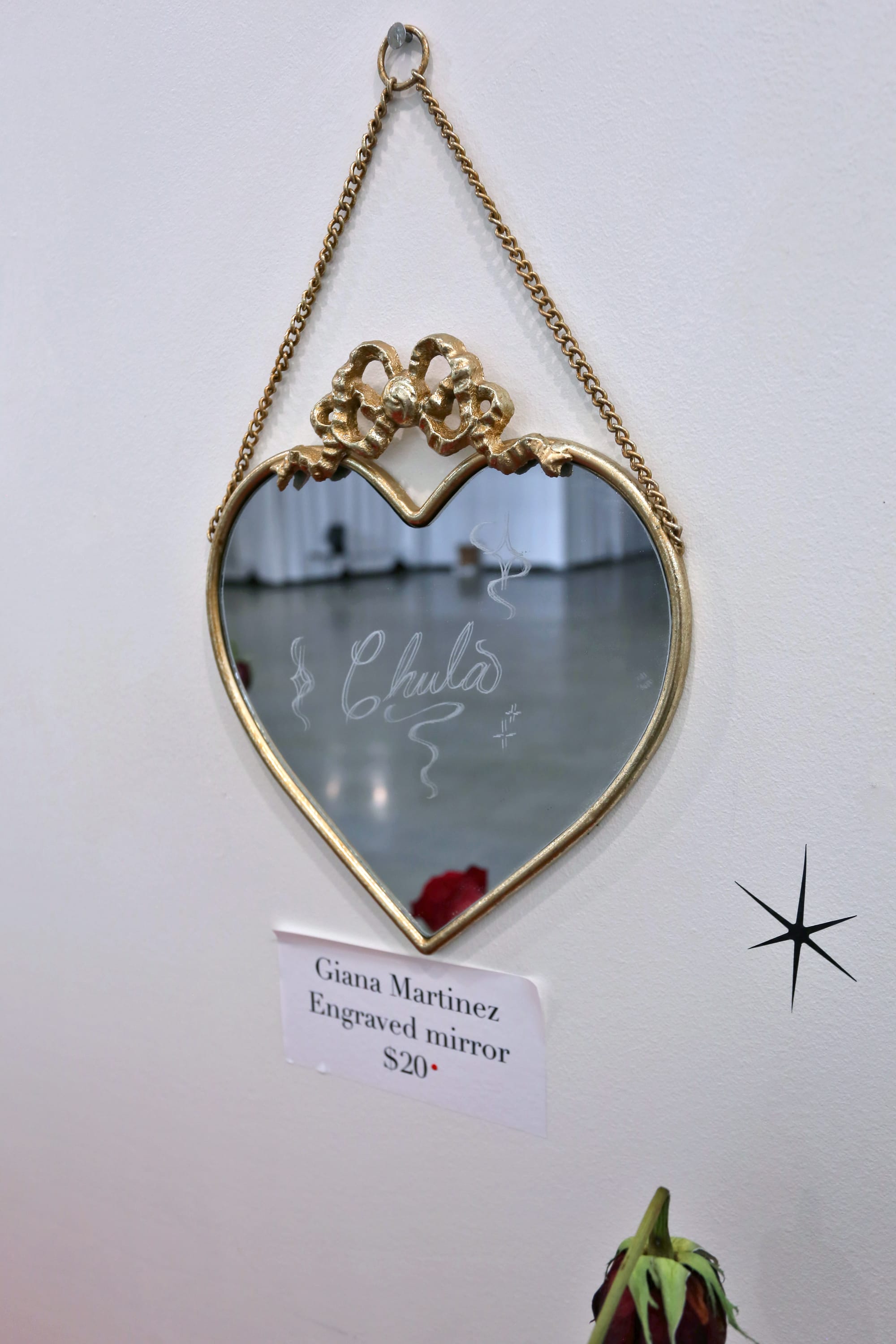
Etched mirrors are installed throughout "Chicana Diaries.' Photos by Jason Crile for the SHOUT.
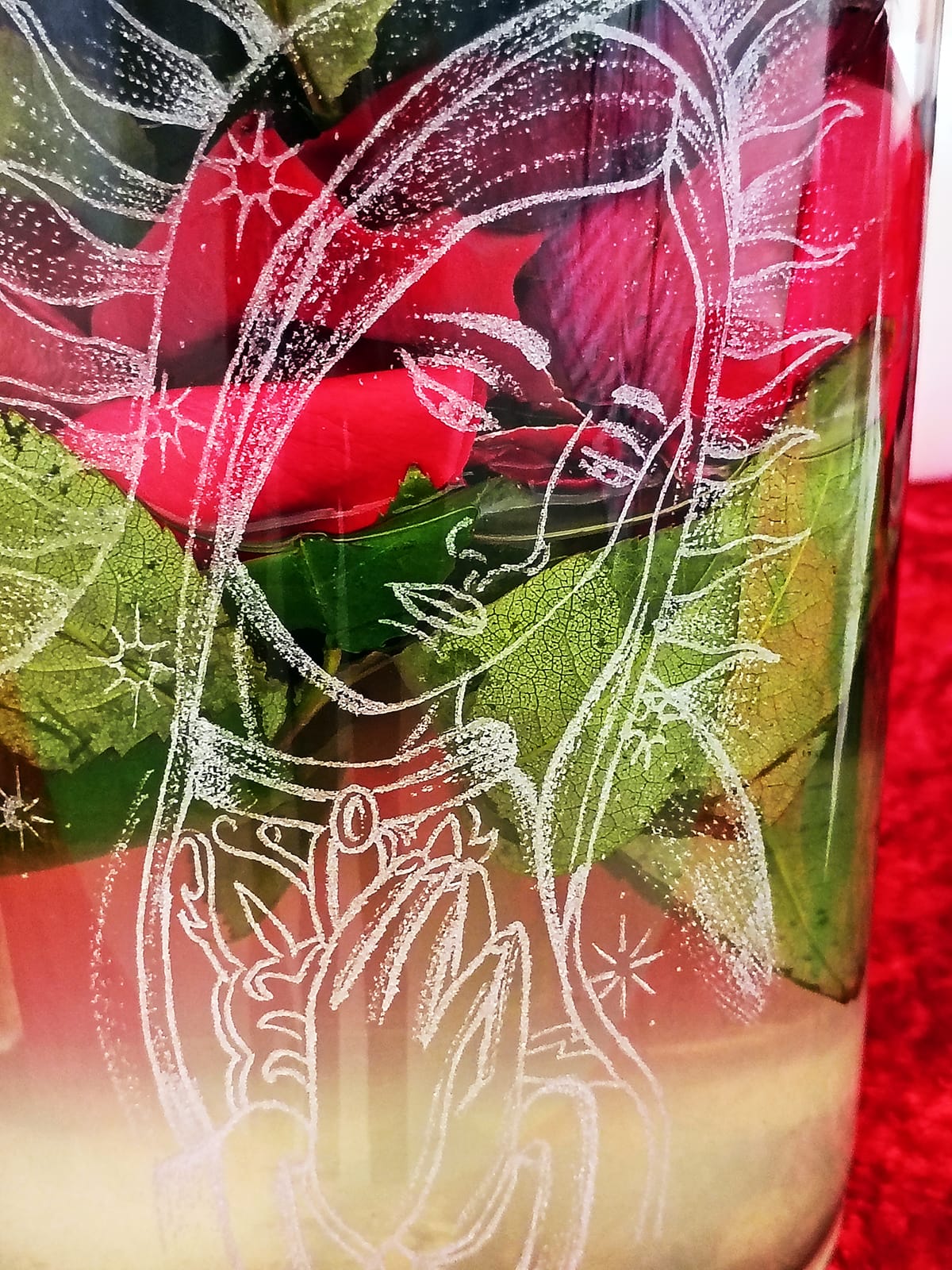
White can be celebratory, and white lace evokes first communions, marriages, virginity. Why is the first communicant — the bride, the virgin, the fêted one — looking in the mirror reminding herself to cry later? Why is she broken in two? Can one half of a butterfly take flight? Why are the parameters of her face those of something which dies weeks after its first emergence? The piece, entitled "Forever Young," conveys the gut-twist of marking conditions, events or moments which by nature are ephemeral, which only happen once, which are over as soon as they begin.
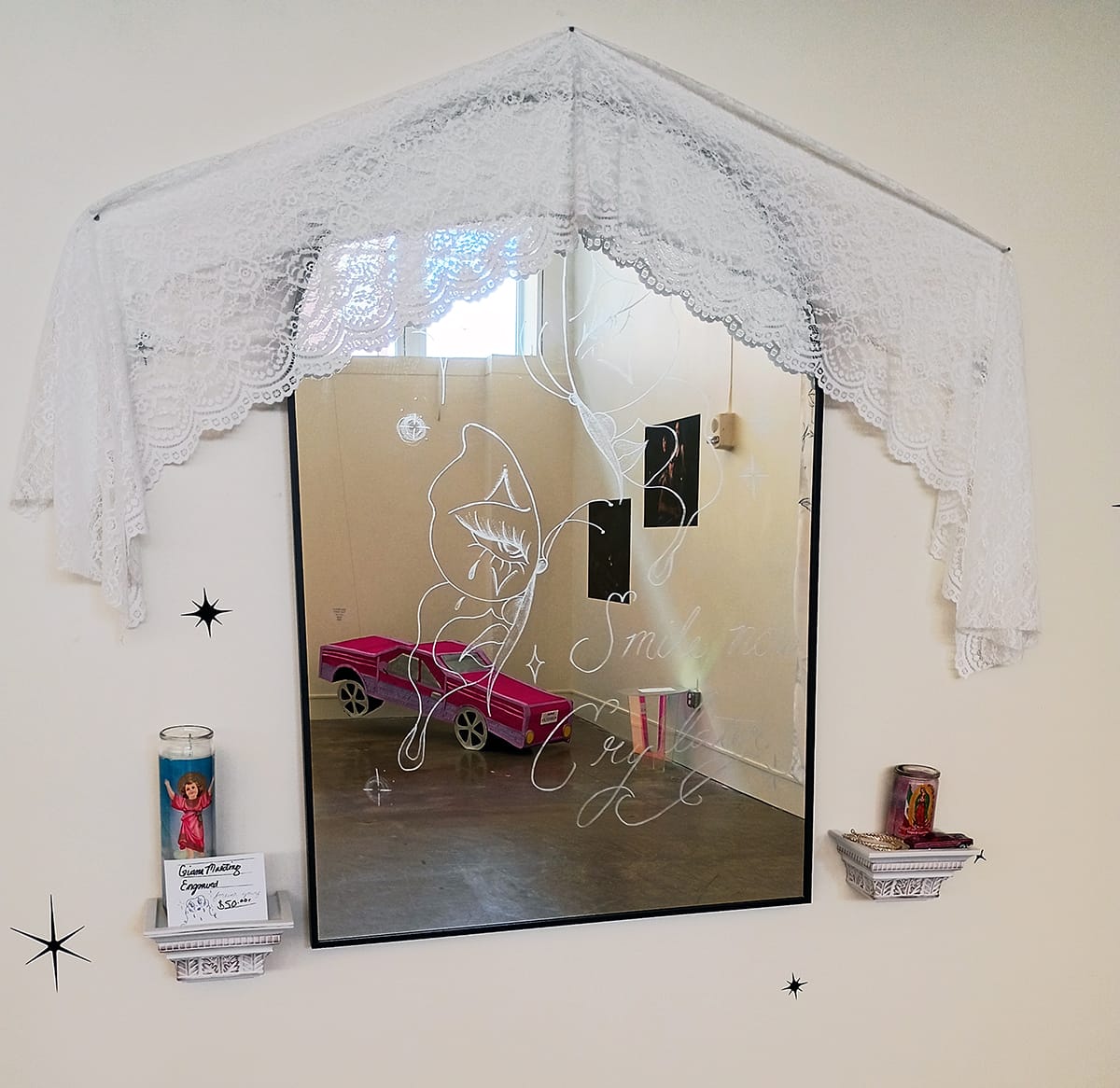
Elsewhere, Martinez has installed a large altar complete with living plants, lace, and monarch butterflies. A small patch of artificial turf extends outward in welcome and demarcation, separating the mundane ground from the enchanted. And then there's the large pink piñata in the shape of a lowrider, by Martinez and Nena Guzman. Entitled "Low Low," the piñata is a self-referential simulacrum, like a pair of pan-pantuflas, and also a sort of visual pun. It makes you wonder: why would someone want to beat the shit out of a car? Is it the effigy of an ex's pride and joy? Or does it represent an alternative aspiration for little girls — a lowrider birthday party rather than a Disney Princess one?
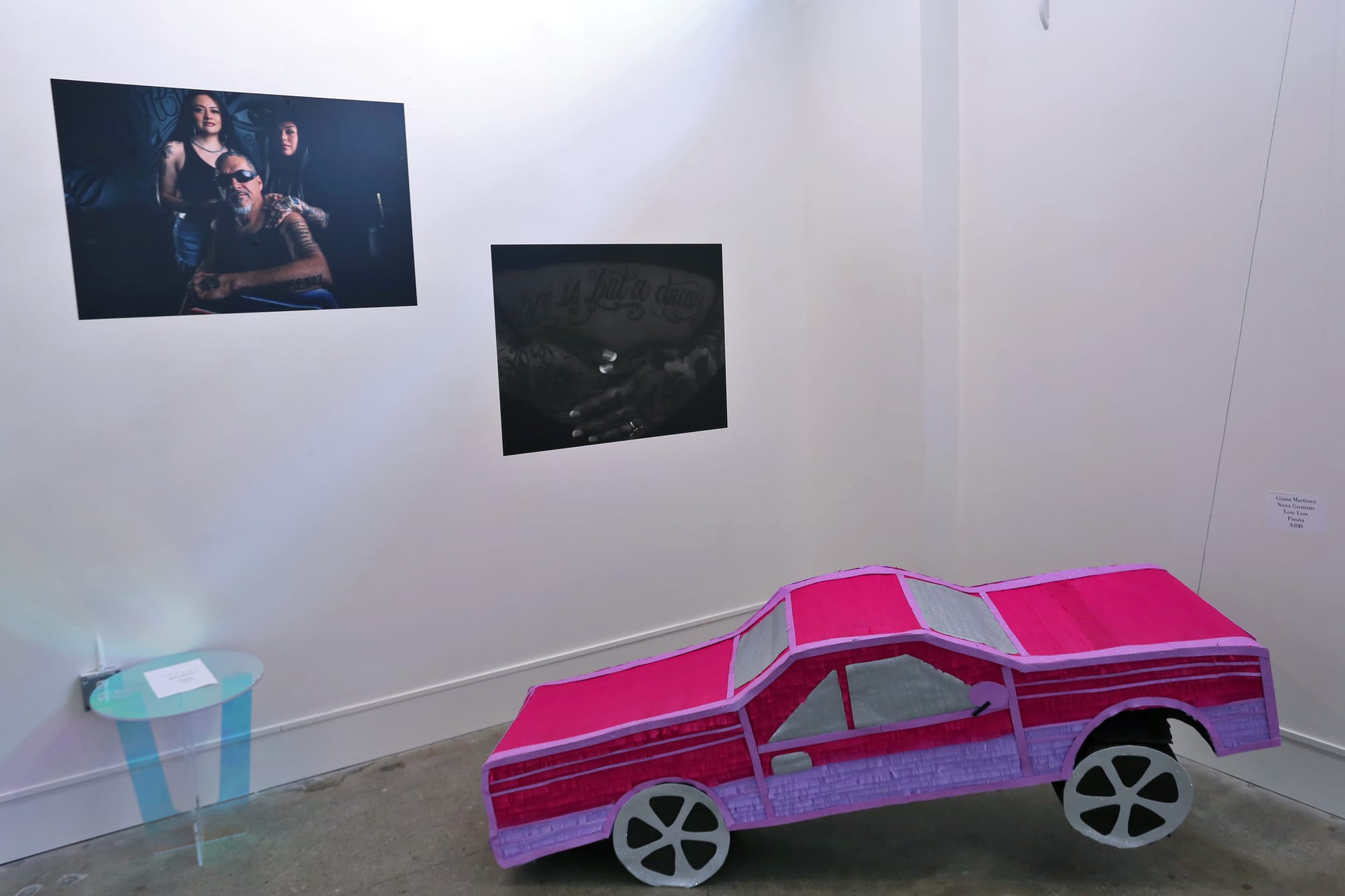

Pleasingly, "Forever Young" reflects "Low Low" in its mirror. Maybe our little first-communicant secretly feels more drawn to the muscle car than her hand-sewn mantilla. Maybe the conflicted bride needs an escape route, or maybe the virginity in her rearview mirror was lost in the pink backseat.
Throughout "Chicana Diaries" the quotidian and the material are endowed with significance. The things of life — their dailiness — are privileged. Not because they represent something else more pure or absolute, but because the embodied living which they facilitate is the works' primary concern. Martinez says plainly that the mere existence of Chicanos is art — a claim that is partially political and identitarian. It’s an assertion of human dignity, which is often denigrated by prejudice and violence. But also one which testifies to the style, the way, the mode of Chicano life; the is-ness of a people.
Our free email newsletter is like having a friend who always knows what's happening
Get the scoop on Wichita’s arts & culture scene: events, news, artist opportunities, and more. Free, weekly & worth your while.
No spam. Unsubscribe anytime.
The impetus of Chicano identity is the reclamation of a common origin, not as nostalgia, but as a parameter for progress. As a way forward. In the words of Montell Jordan's 1995 hit — which itself was an homage to South Central Los Angeles — this is how we do it.
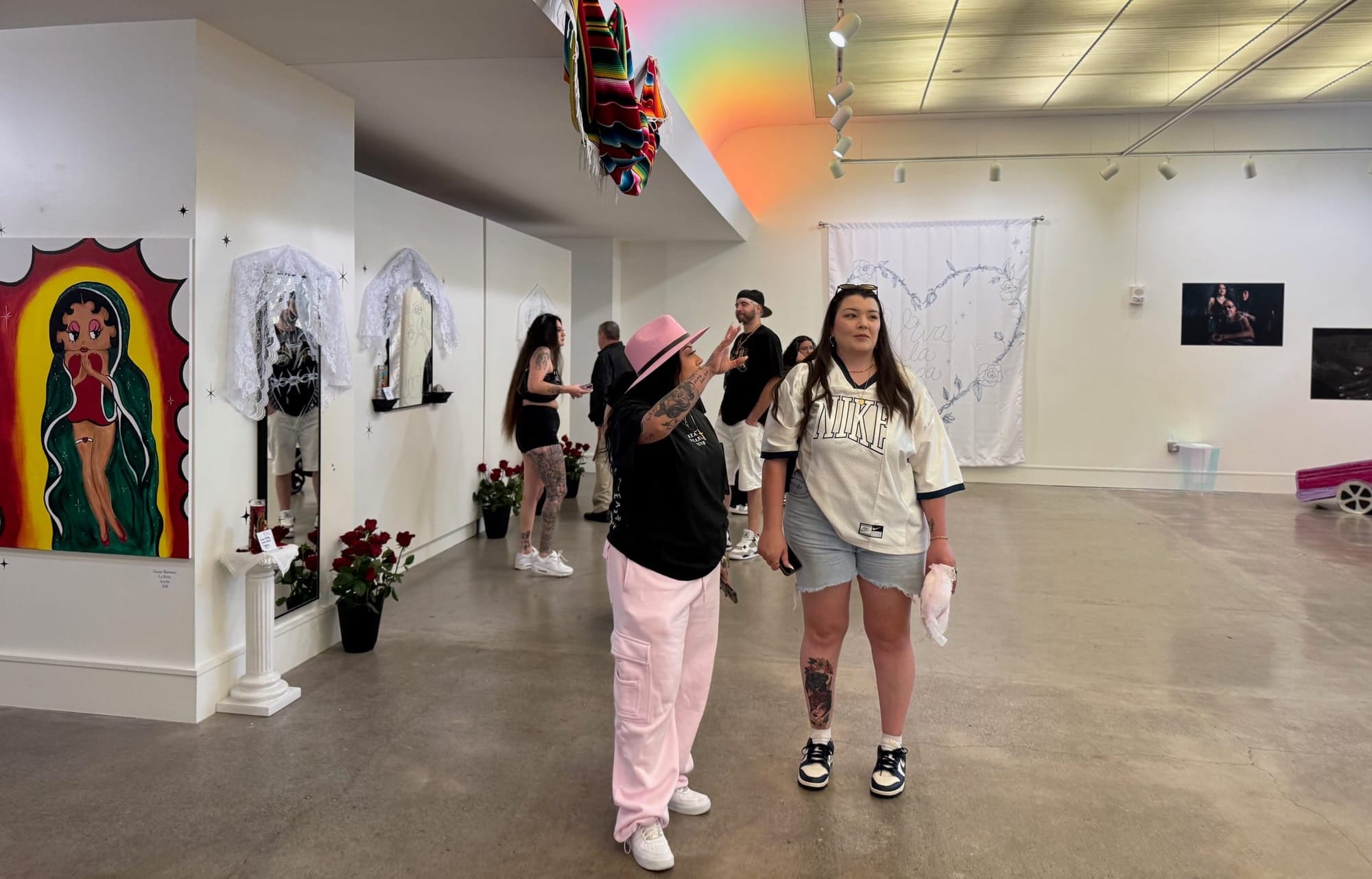
The exhibition's concern with tattoos, fabrics, mundane activities, friendship, and maternity reflect the sacramentality prevalent in material cultures heavily influenced by Catholicism, even among groups or subsets who are not religious. The items immanate. They contain the truth, the themes, the stories, the experience. They are the point.
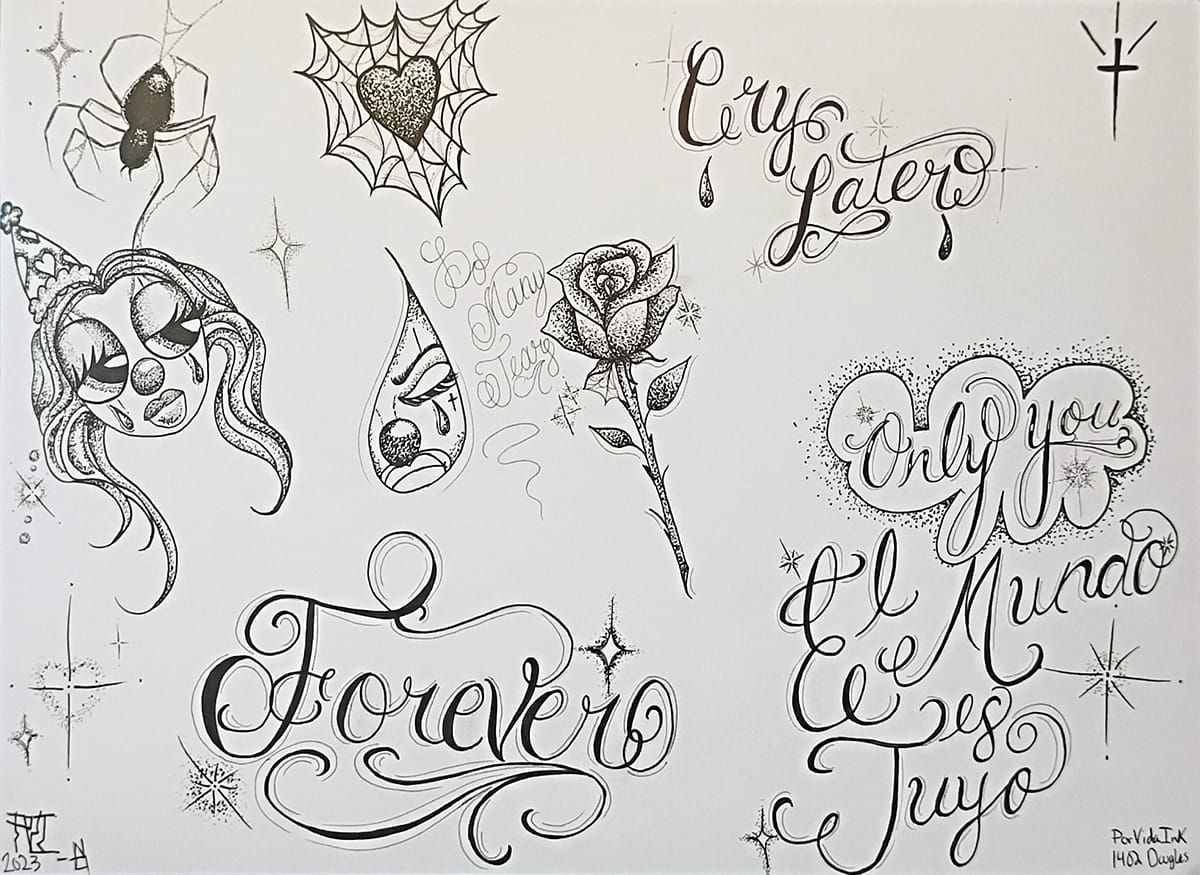
Chicano culture's fealty to La Virgen de Guadalupe exemplifies this dynamic. A close friend of mine's first tattoo was of La Virgen. It's large and prominently placed on his shin. In his words, "I'm not very religious, but it just seemed like the right thing to do." That's because La Virgen does not point to the institutional church, which, at least in the United States, continues to hemorrhage Latino members under the age of 30. She points nowhere. She is the location of a people, of a hybridity, and of an eternal and boundless solidarity. She is La Frontera. Thus, no preciousness about her can be abided; her image cannot be effaced; we can do with her what we like. This is something which generations of Chicana artists have realized and undertaken.
Martinez continues in this lineage, with what might be the show's most emblematic work: "La Betty." The work is a large acrylic painting on canvas of Betty Boop donned in the rays and mantel of La Virgen. Here two feminine icons — who both in their own ways represent integrated duality, resilience, and vulnerability imbued with strength — are remixed and mashed together. Neither loses anything and both gain something — the Chicano dynamic.
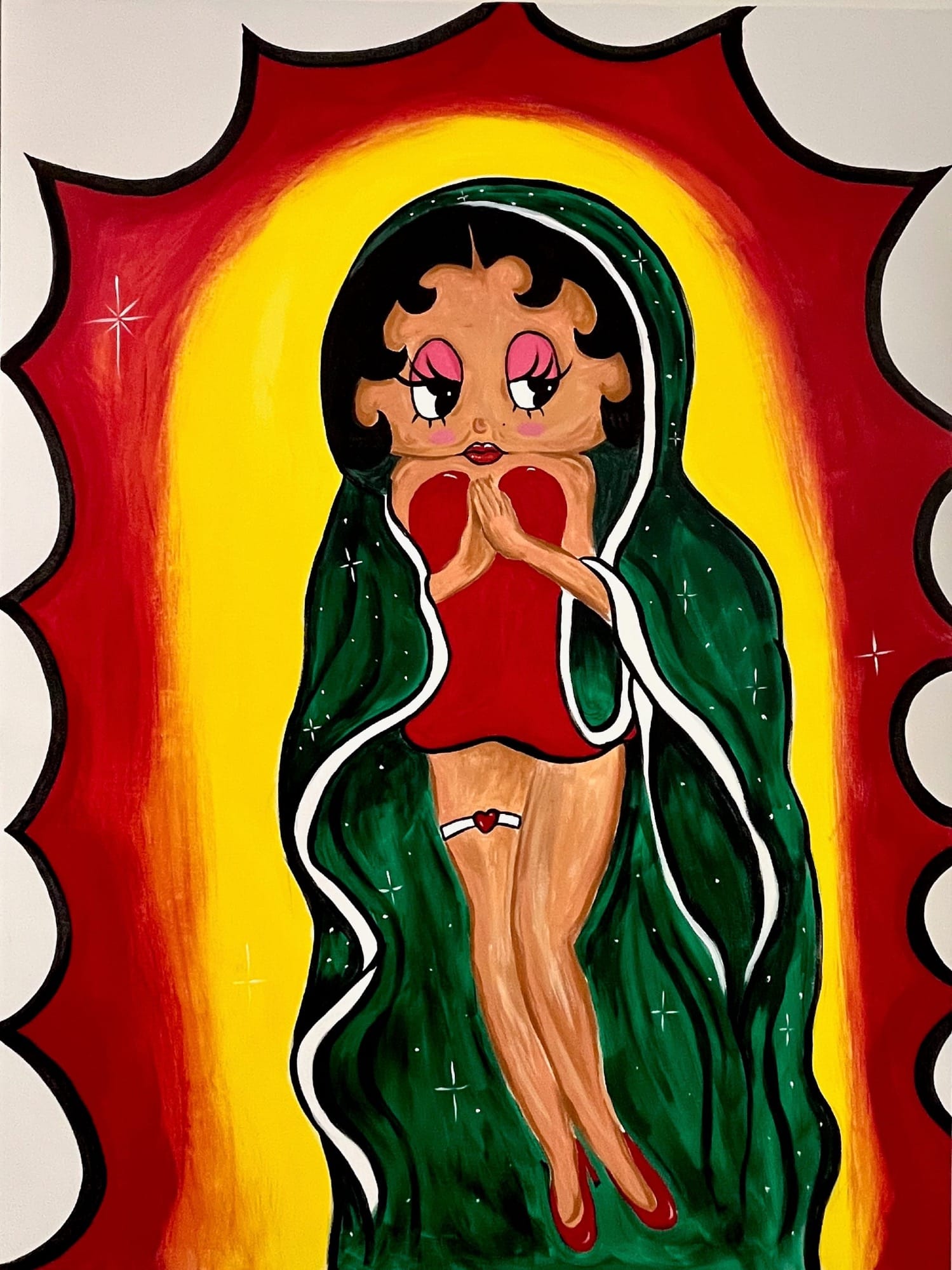
To rely on a theological premise, "Diaries" operates in the analogical mode, rather than the dialogical. It does not preach, is not properly a manifesto or a creed. It's a demonstration. It says "we are like this," "it's like how when we…," "you know how they do…," "this is how we do it." That mode is arguably more fecund than the explicit or the programmatic. When nurtured, it doesn't take long for those questions to arrive at "remember" and "what if?" and "yeah, but." Martinez has created an installation and a laboratory. She has gathered immanent items, concentrated them in one place and time, and generated not a mere conversation but a dialogue — one which at every turn makes clear that she did it con mucho amor.
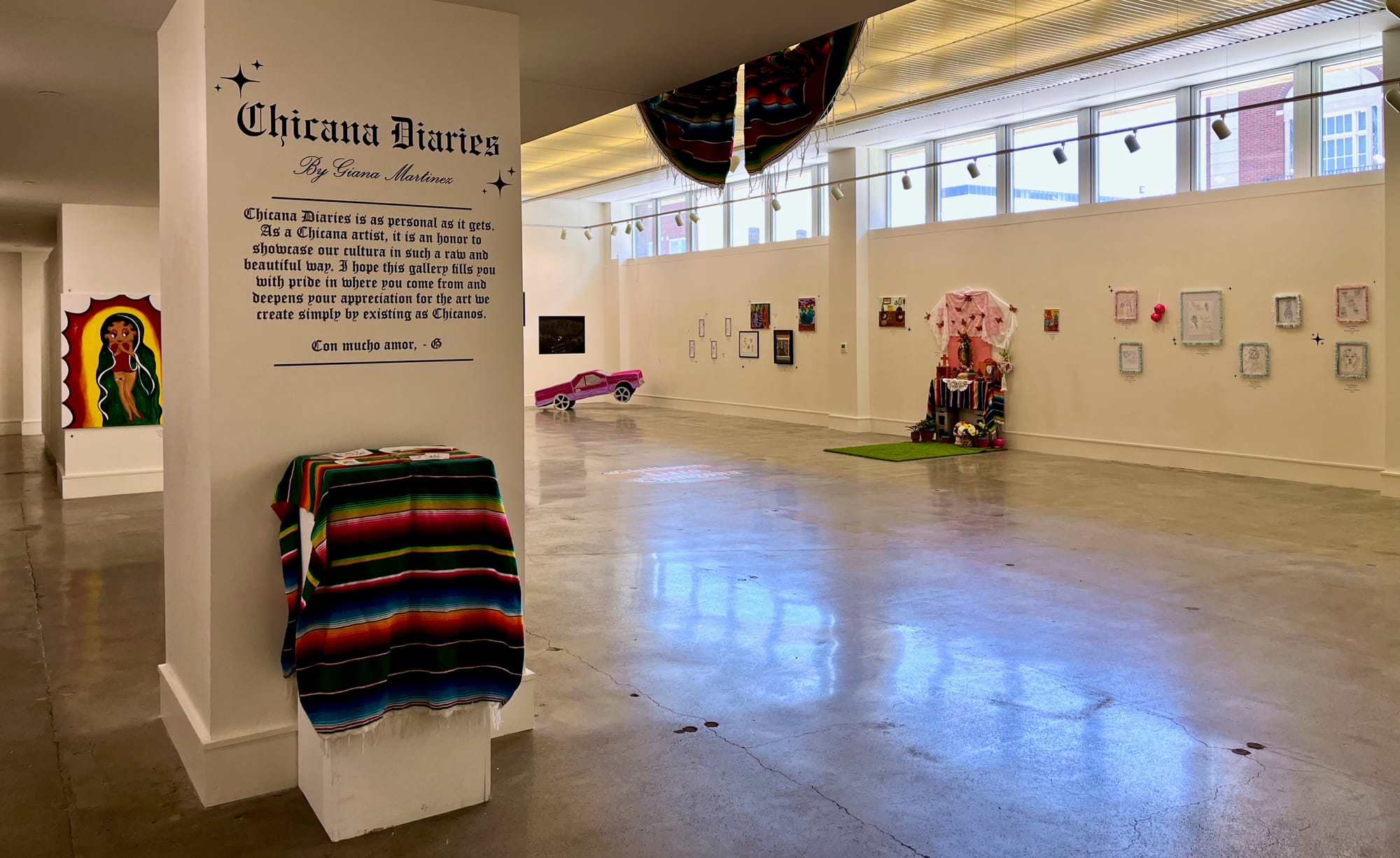
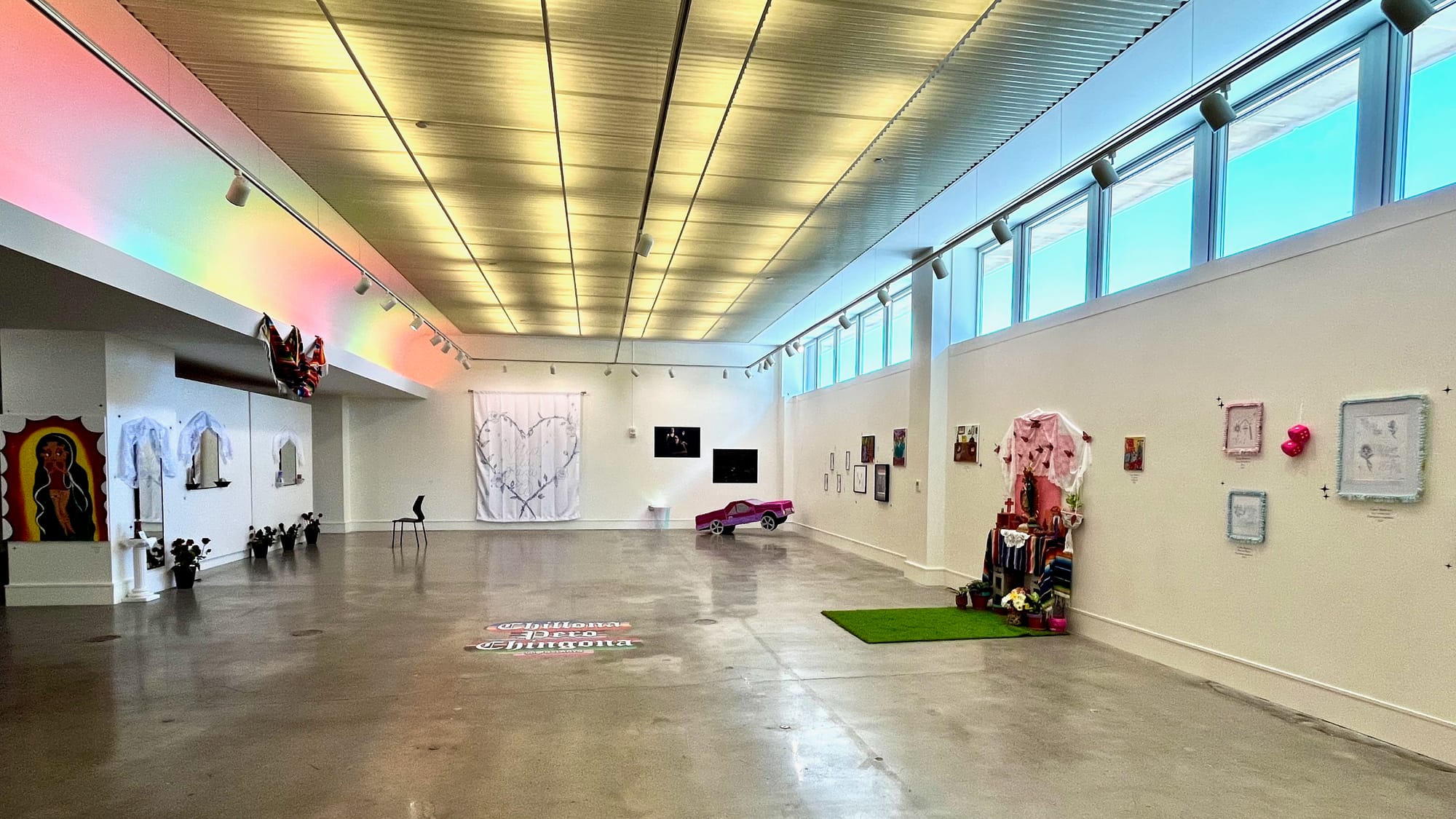
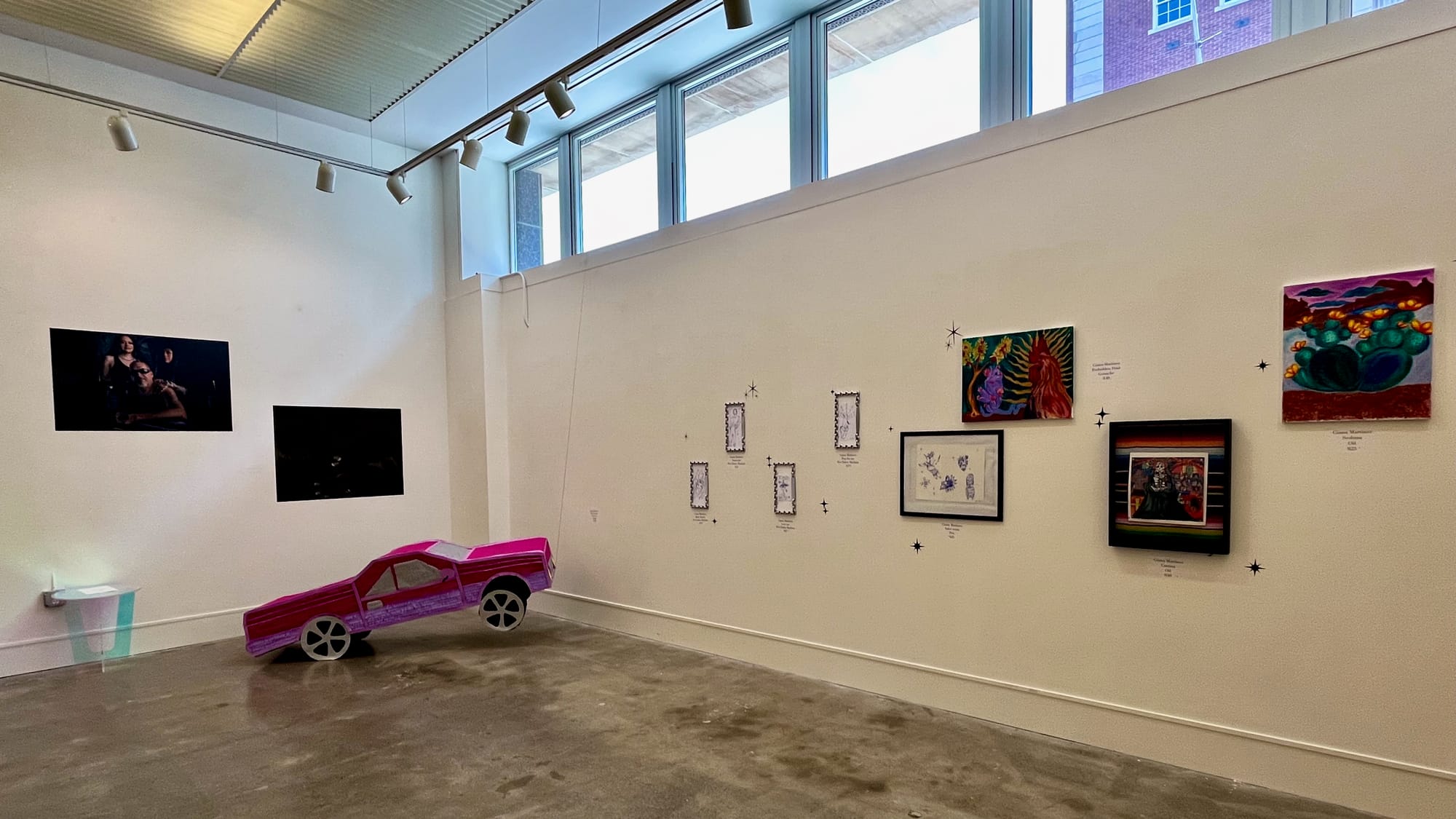

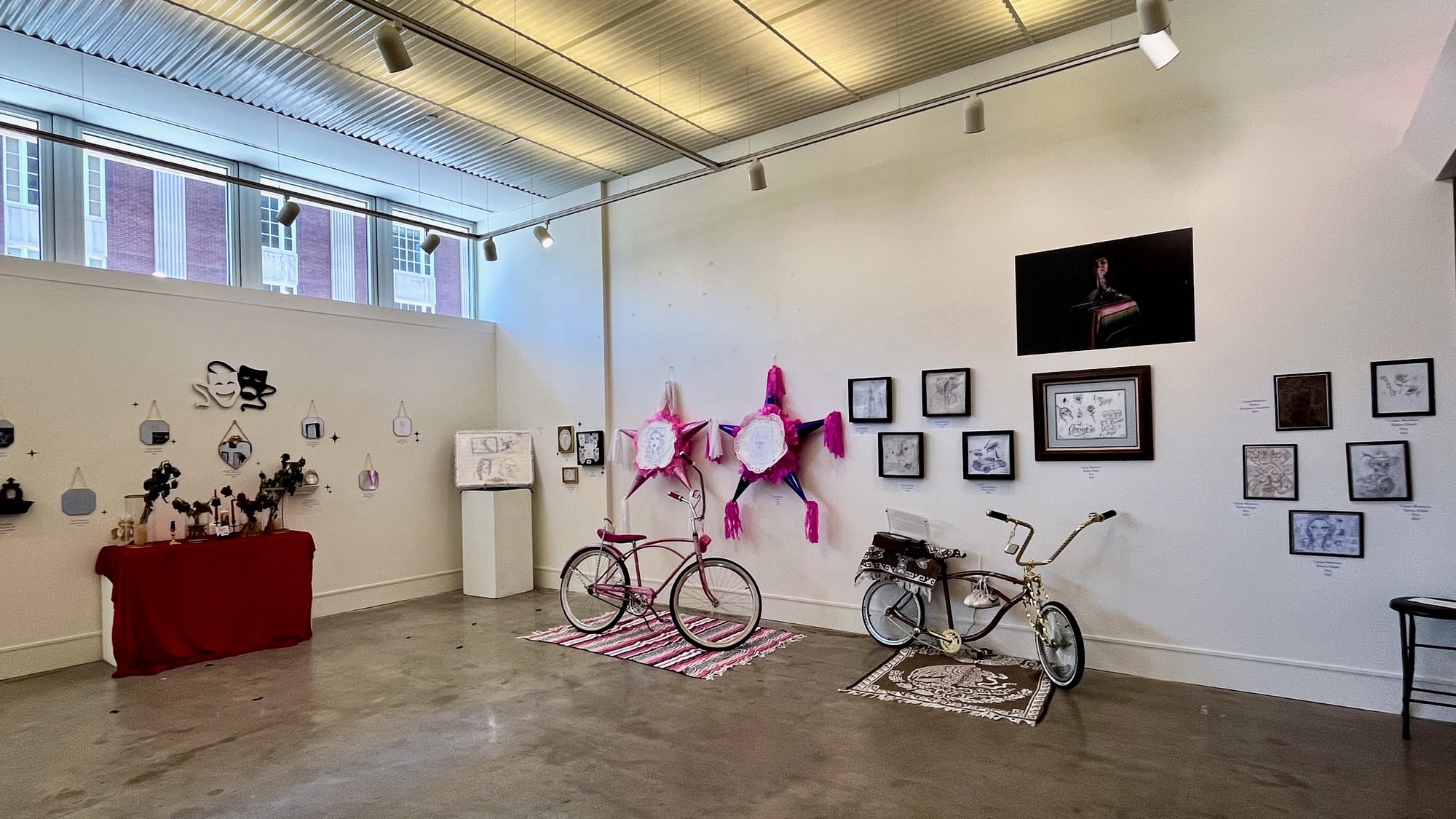
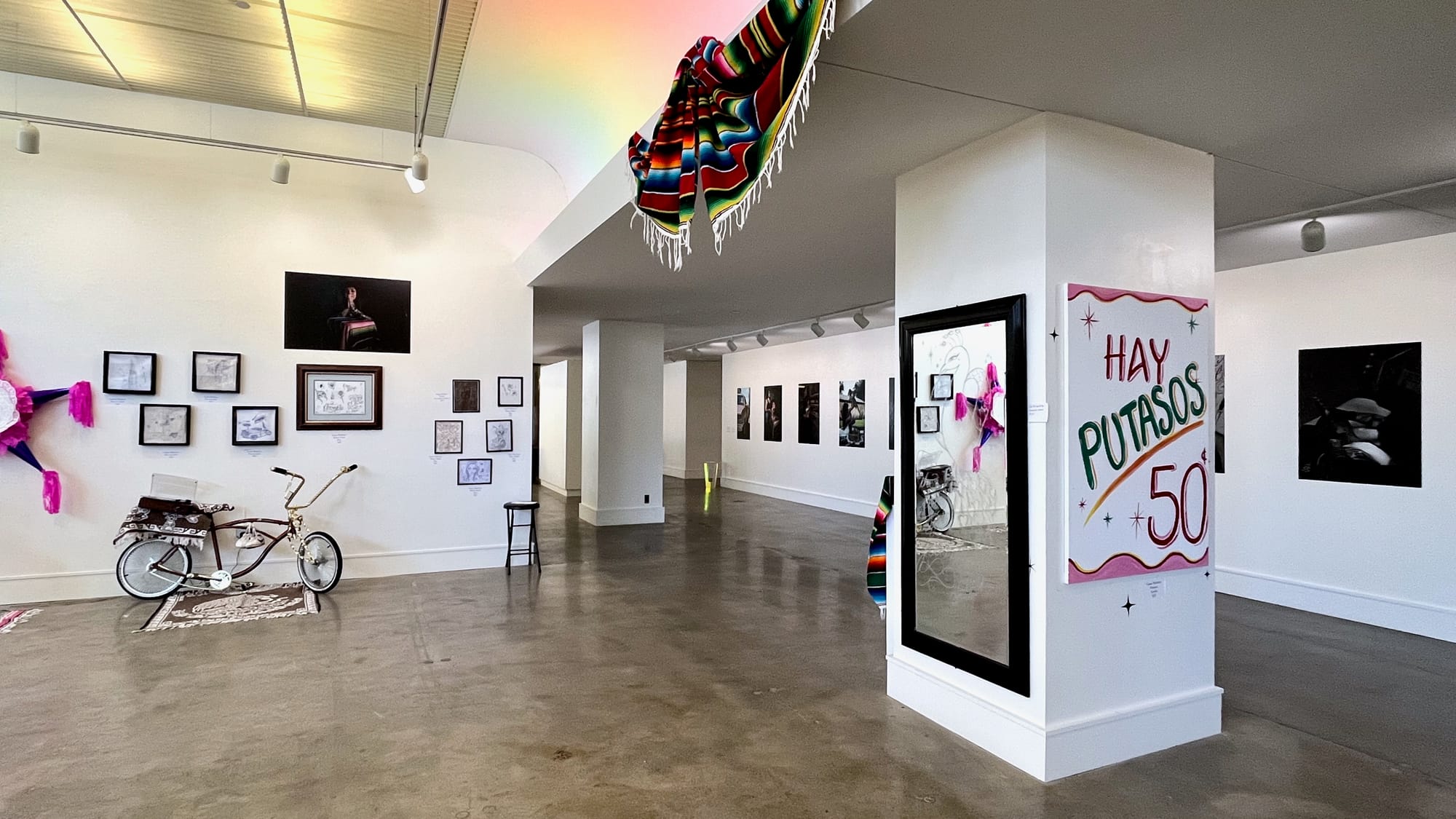
Installation views of Giana Martinez's "Chicana Diaries." Photos by Emily Christensen for the SHOUT.
The Details
"Chicana Diaries," an exhibition by Giana Martinez
July 12-24, 2025, at Harvester Arts, 120 E. 1st St. N. in Wichita
In addition to opening and closing receptions, the gallery is open from 3-6 p.m. Tuesday-Friday and 10 a.m.-2 p.m. Saturdays. Admission is free.
Jeromiah Taylor is a writer from Wichita, Kansas. He is editorial assistant at the National Catholic Reporter and a news contributor at New Ways Ministry.
Support Kansas arts writing
The SHOUT is a Wichita-based independent newsroom focused on artists living and working in Kansas. We're partly supported by the generosity of our readers, and every dollar we receive goes directly into the pocket of a contributing writer, editor, or photographer. Click here to support our work with a tax-deductible donation.
❋ Derby man has the kind of voice that turns heads — and chairs
❋ Socializing while sober: how some Wichitans are cultivating alcohol-free communities
❋ As a small creative business closes, the owner mourns
❋ Painting through it: Autumn Noire on 20 years of making art
❋ How a guy from Wichita resurrected 'Dawn of the Dead'
❋ Bygone Friends University museum housed curious collections



